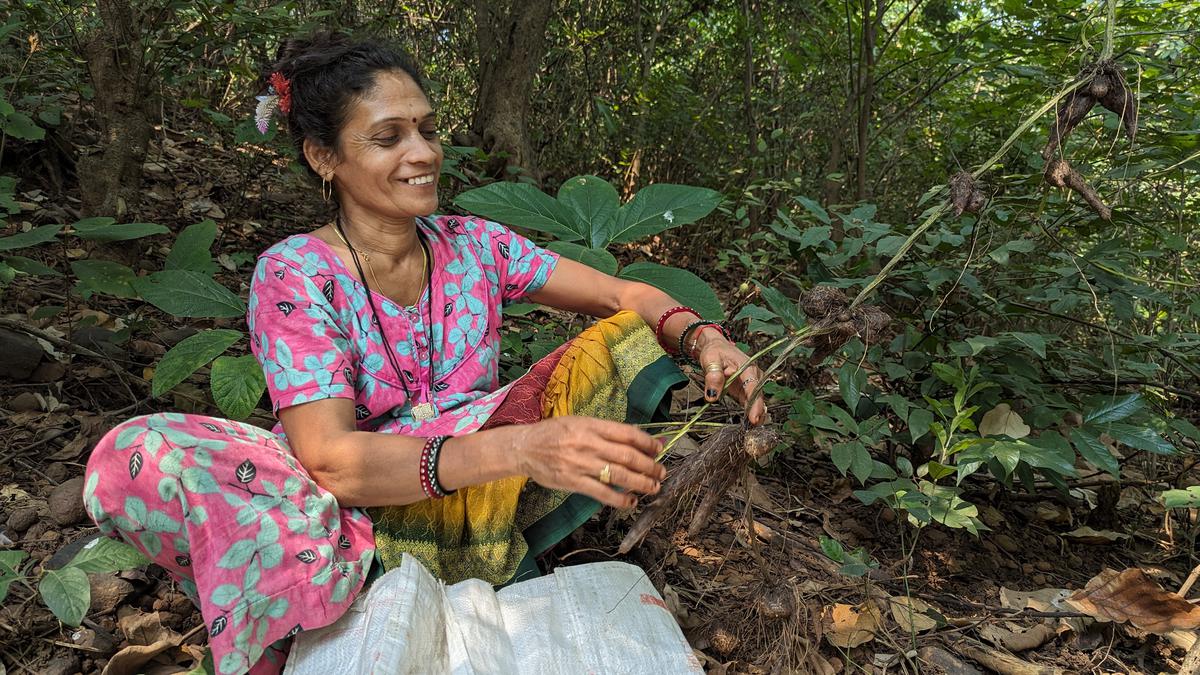
How to forage for lunch in Mumbai’s Aarey forest
The Hindu
Foraging trails through Mumbai’s Aarey emphasise the need to save our forests and tribal heartlands, a repository of heritage plants and indigenous knowledge
Mornings in Aarey forest wear a blanket of fog these days. Fitness enthusiasts can be seen along the quiet, serene roads bordering the forest.
I am here as part of a forest foraging and traditional ecological knowledge workshop and plantation in the tribal heartland of Mumbai’s Aarey. The workshop is conducted by the Waghoba Habitat Foundation (an environmental conservation non-profit organisation) and No Footprints (a travel company that promotes community-based stories lost due to constant urbanisation).
A bunch of 20 Nature enthusiasts from the city join the workshop and we form a circle as our facilitator arrives near the Aarey tabela (cow shed), our meeting point. Environmentalist, educator and documentary film-maker Sanjiv Valsan begins by briefing us about the history of Aarey and the purpose of this workshop.
“Officially, this area is recognised as Aarey Milk Colony but these days it is also recognised as Aarey Forest because of the protests that happened here a few years ago to save the forest. The former Government recognised it as a forest and 812 acres of land was declared as a reserved protective forest but 1,200 acres of forest still need to be protected and it couldn’t be done because the Government changed,” says Sanjiv.
“In the ‘70s, Government gave away land to Film City then came the Jogeshwari–Vikhroli Link Road, a dysfunctional veterinary college followed by multiple real-estate projects that sprung up by clearing parts of Aarey, which was extended till Powai and Thane,” says Sanjiv.
He adds that we are at Khambacha Pada village where one of the 31 cow-sheds of Aarey Milk Colony was set up with a purpose of rehabilitating scattered cattle-sheds in Mumbai city at one place. “Over the years the city is getting closer to the forest and the forest has only become smaller for the tribal people – once called jungle cha raja (king of forest) – who have been living here since the 11th Century,” adds Sanjiv.
Let’s begin the foraging











